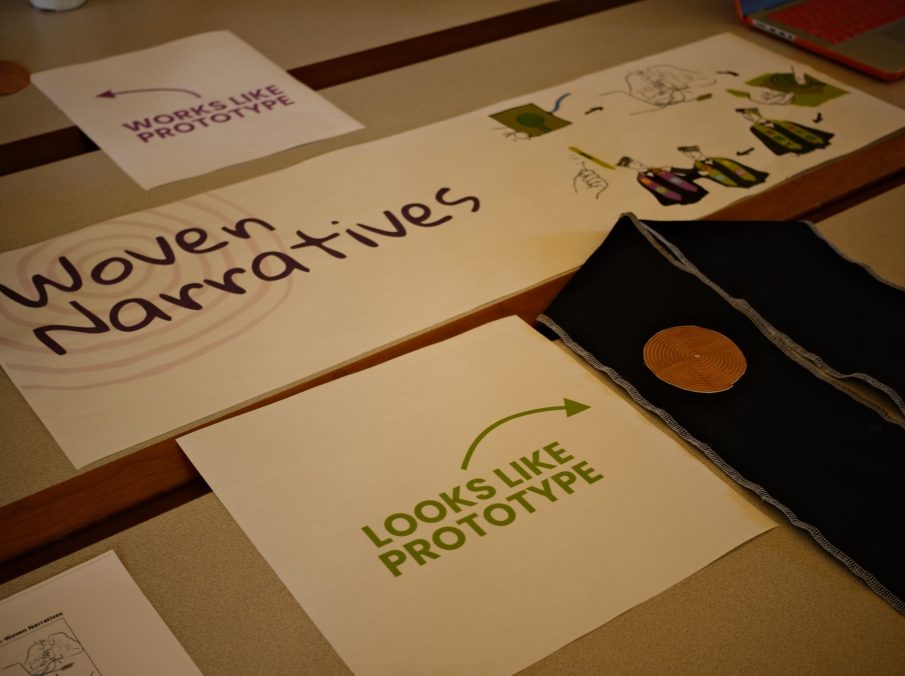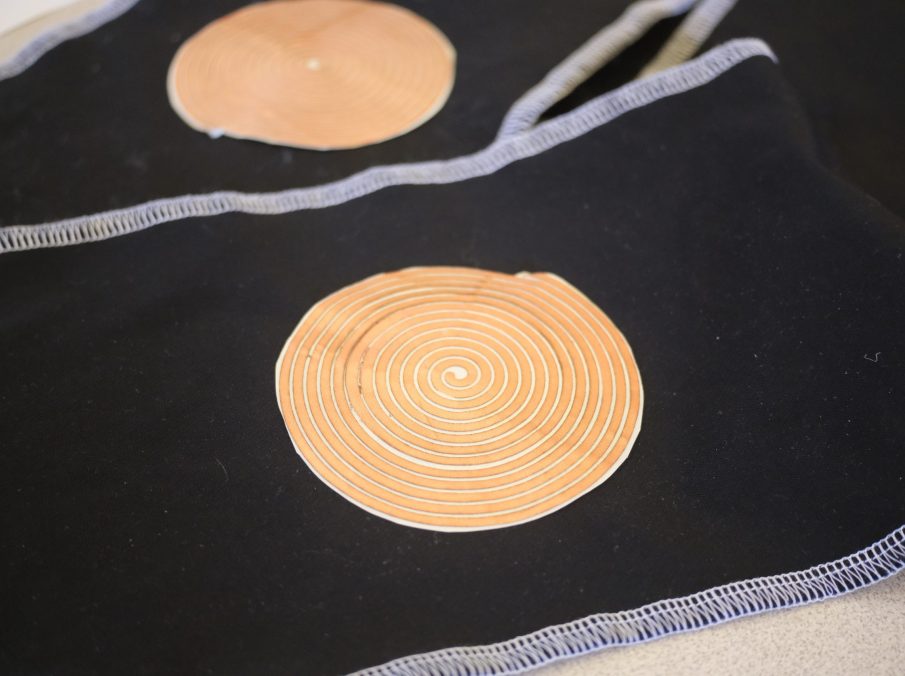Woven Narratives
Embedding memories into culturally significant momentos and traditional crafts using soft circuits.
Coding & Circuit Design
Material Exploration
Digital Fabrication
Duration
2 months
Collaborators
Christine Marcelino
Liam Hatakenaka



Motivation & Design Proposition
The Woven Narratives project explored the intersection of cultural/personal heritage, e-textile technology, and embodied interaction.
Textiles inherently carry stories, and are often family heirlooms. We augment this aspect by creating a sensory-enhanced way to celebrate connections and stories shared among individuals. The end concept is a wearable archive of sounds and memories.
User Experience
In order to create a user journey and scenario, we focused our idea on creating a graduation stole- a momento that carries significance for many- as the wearable textile.
We leveraged e-textile technology and fabric speakers to bring this vision to life. Using copper fabric spirals we create a textile-based amplifier that plays recorded sounds or music when a magnet is brought close. Graduating individuals can collect fabric pieces with personal significance — such as those tied to family, cultural identity, friendships, or formative experiences. By embedding sound elements within the textile, the stole augments its meaning, allowing users and those around them to hear narratives that celebrate the wearer’s journey.
Technology & Challenges
The fabric speakers work by coiling a conductive tape/fabric on a base layer which acts as an electromagnet when current (audio) is passed through it. When a permanent magnet is brought near it, the magnetic field from the coil interacts with the magnet, causing the fabric to vibrate and create sound waves, acting as an amplifier.
There are some key aspects to consider when developing these speakers. The fabric speaker’s performance hinges on material properties like fabric stiffness and copper conductivity. Stretch cotton lacked the rigidity for effective vibration and sound. A double layer of masking tape as backing improved results, but more research is needed to find fabrics that balance stiffness and flexibility for wearables.
The thin, high-resistance laser-cut copper fabric used initially compromised sound quality. Alternatives like thicker copper wire, conductive thread, or copper tape may perform better, but need testing for textile integration and durability in wearable use.4o
User Interaction & Feedback
User testing revealed that the copper spirals not only functioned as amplifiers but also drew attention through their striking visual appeal, encouraging interaction. Their presence made the stole both meaningful and aesthetically engaging, resonating with the themes of memory and connection central to graduation.
Feedback emphasized the need for an on/off switch to prevent unintended sound in formal settings—an integrated control could solve this. Users also proposed broader applications, like embedding fabric speakers into scarves or pillows for comfort and emotional connection, suggesting strong potential in therapeutic contexts such as hospitals.










